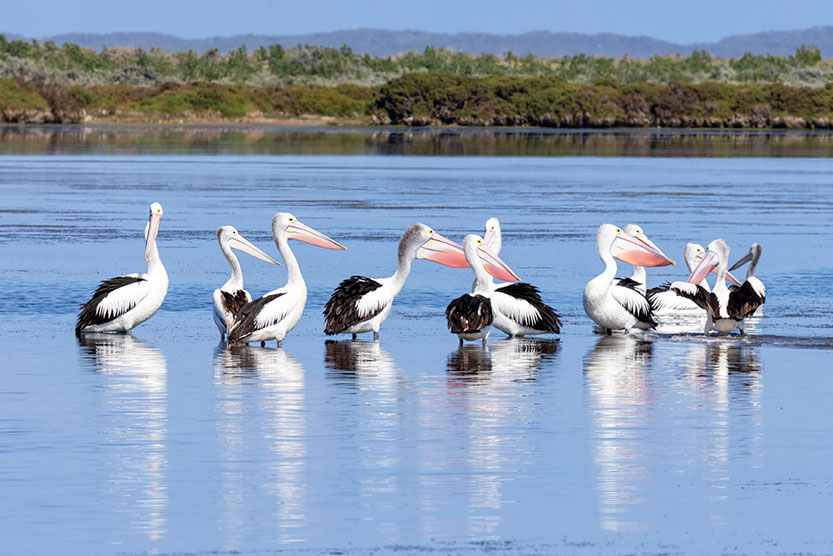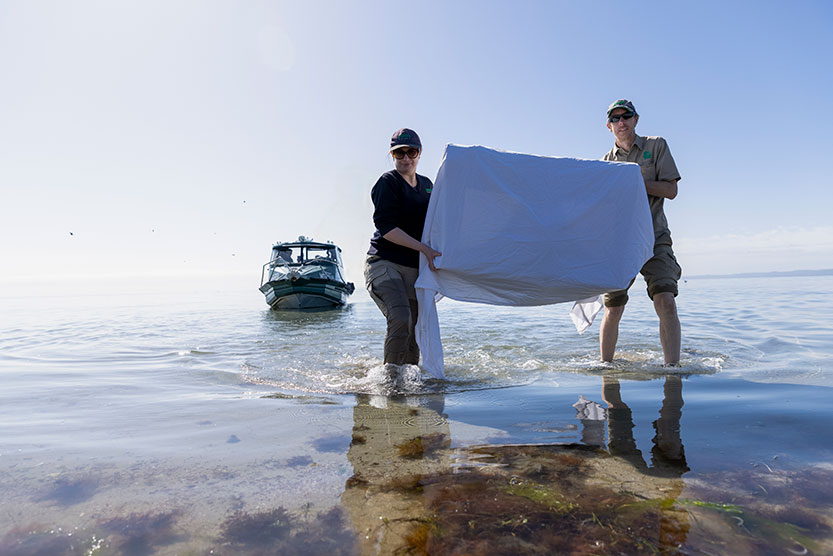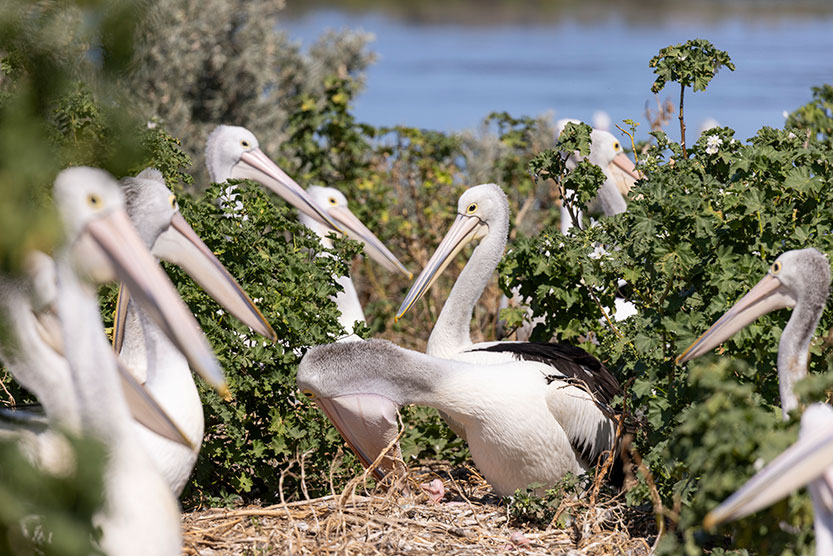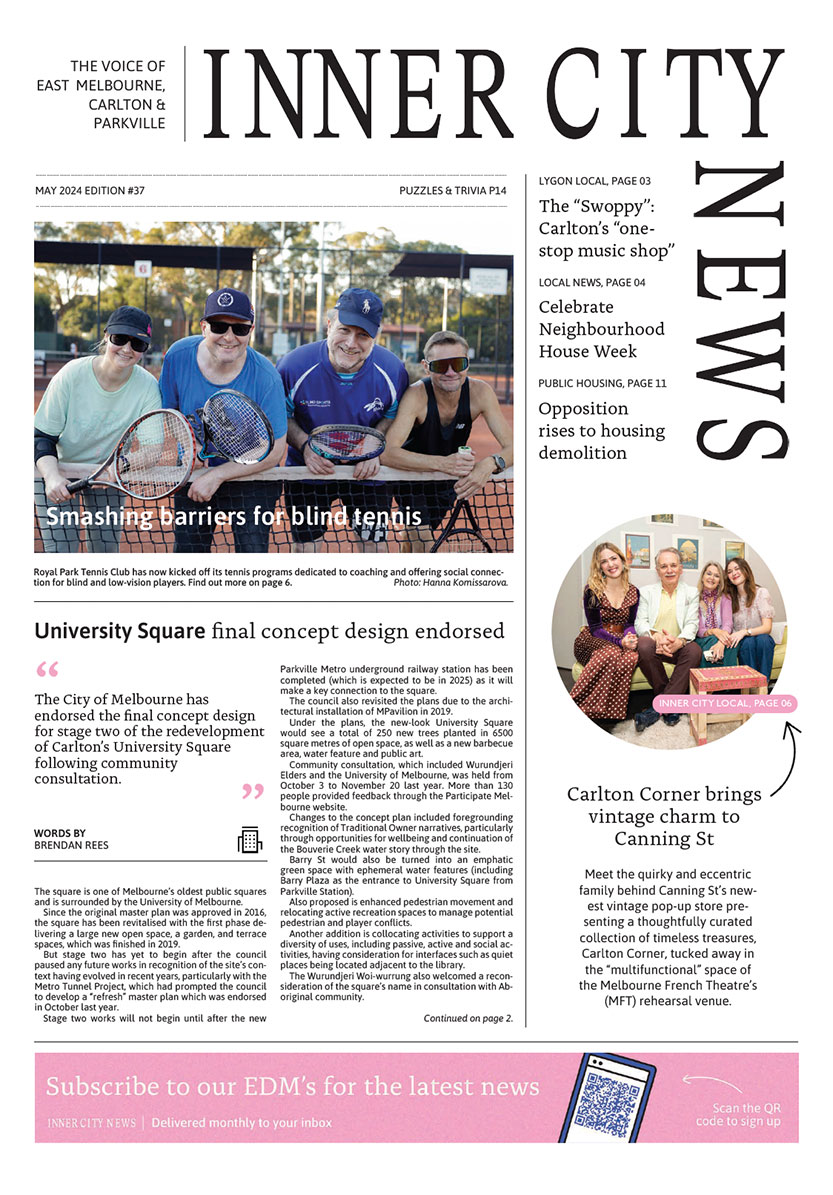Pelican’s remarkable journey home
Rarely seen by humans, wild juvenile pelicans are only found in four remote breeding colonies throughout Victoria.
So, when one washed up cold, wet and disorientated on a beach at St Leonards it was clear it had been blown far away from home.
The four-month-old bird was transported to Werribee Open Range Zoo by a Wildlife Victoria rescuer, assessed by the veterinary team, and deemed too young to be independent.
Melbourne Zoo marine response unit keeper Greg McDonald said the team embarked on an epic journey to return the pelican back to its family on Mud Island.
“After the bird was transported to Melbourne Zoo, the Marine Response Unit team travelled two hours to Queenscliff and then took a boat with Parks Victoria to Mud Island which is over 9km east of Queenscliff by sea,” Mr McDonald said.
“Young pelicans stay in a crèche of up to 100 birds of the same age while their parents go out to fish, so we had to trek through the reeds to find its siblings.”
Once the crèche was found, the young pelican settled right back in with its fellow fledglings. •
“It’s so rewarding to be able to return this young pelican back to his home,” Mr McDonald said. “Although it was a long journey it was absolutely worth it to ensure this pelican lives a long and happy life.”
Mud Island is the largest breeding pelican colony in Victoria, followed by Mallacoota, Paynesville, and Mildura.
The Australian Pelican is found throughout Australia, New Guinea, and eastern Indonesia, with occasional reports in New Zealand and western Pacific islands.
Pelicans have a pouched bill that can hold 13 litres of water, but mostly it’s used to catch fish. Pelicans can soar at heights of up to three kilometres.
Anyone who sees a marine animal in distress should call the Melbourne Zoo Marine Response Unit on 1300 245 678.
For more information: zoo.org.au/fighting-extinction/marine-response-unit

Treasured First Nations artwork presented to the University of Melbourne







 Download the Latest Edition
Download the Latest Edition